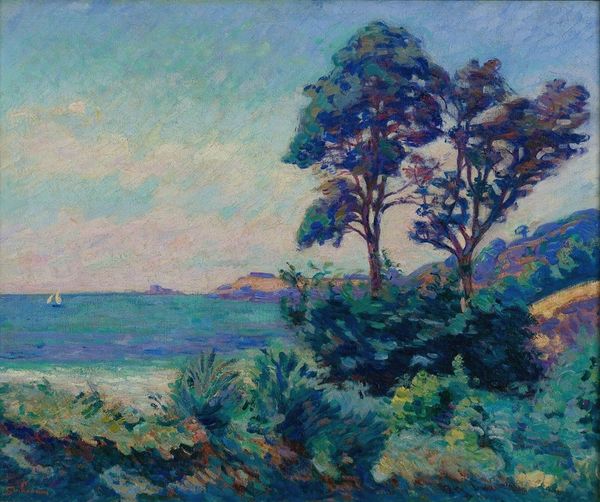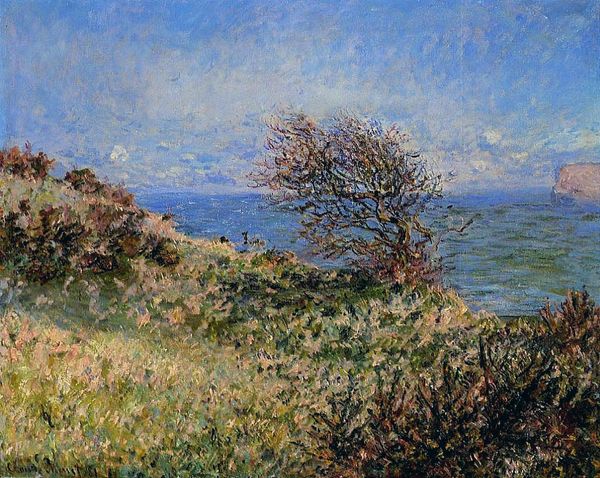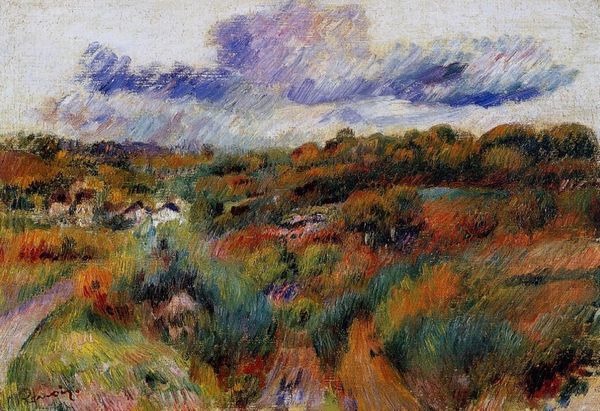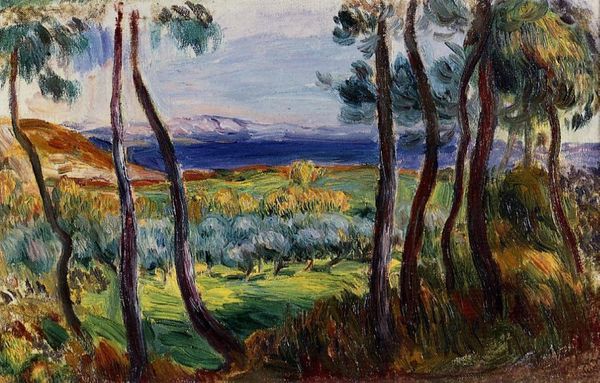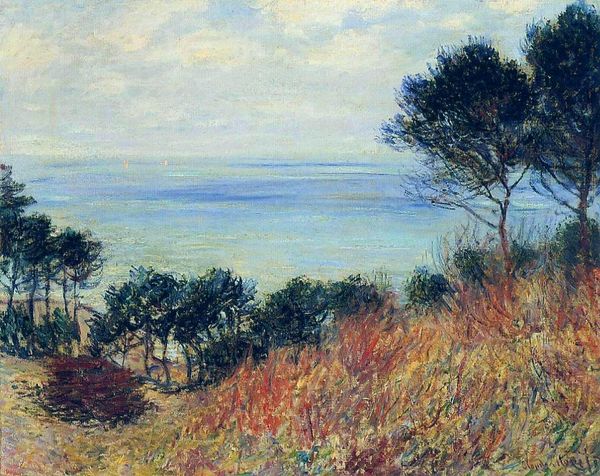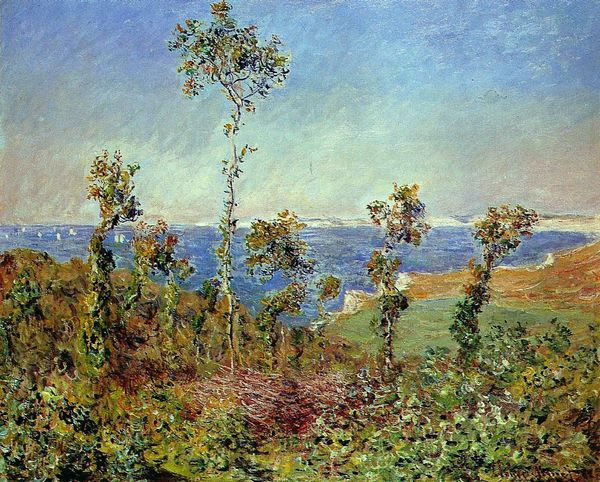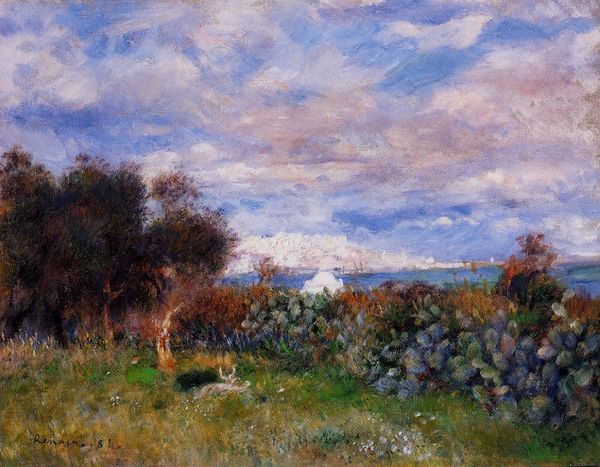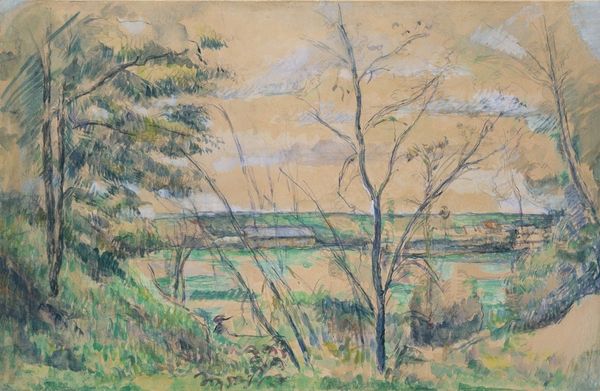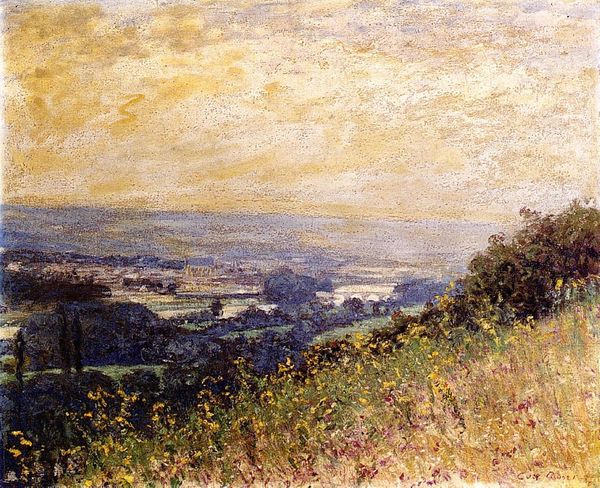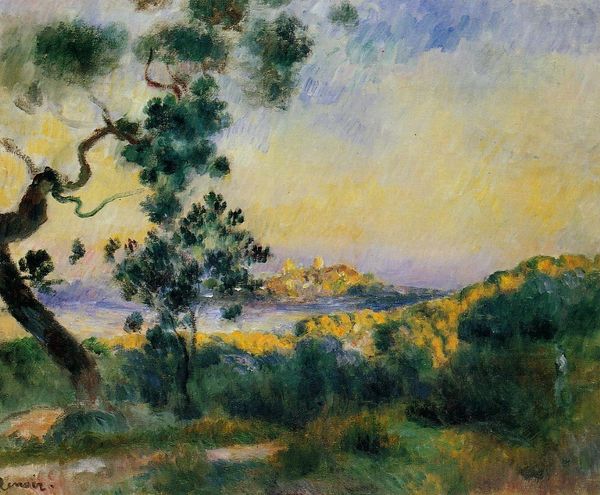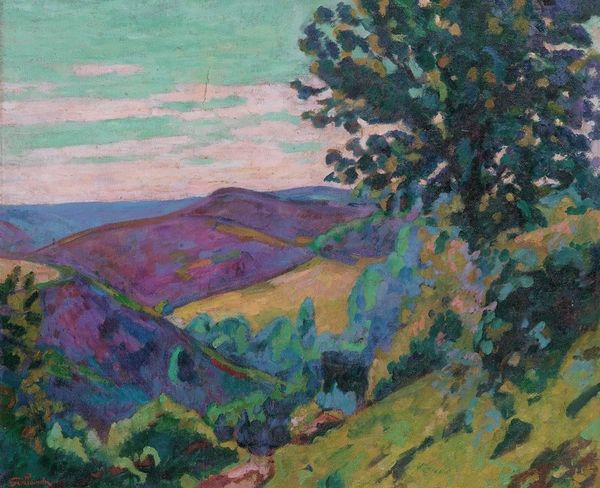
Copyright: Public domain
Editor: This is "Cliffs of Varengeville, Gust of Wind," painted by Claude Monet in 1882. It’s an oil painting, and I immediately notice the energy in it. The wind seems to be sweeping across the canvas. How do you interpret the symbols within this landscape? Curator: Well, the wind itself is a powerful symbol. In many cultures, it represents change, the breath of life, and even the divine spirit. The way Monet depicts it—violent, almost—speaks to a disruption, perhaps even a psychological turbulence. Notice how the trees are bending. Editor: Yes, they almost look like they're bowing down, or perhaps fighting against the wind. Curator: Exactly. That tension is key. Consider, too, the coastal setting. The sea often symbolizes the unconscious, the vast unknown. The cliffs could represent the boundaries, or the conscious mind, struggling to maintain its form against the forces of nature. What feelings do you have regarding color palette? Editor: It is not colorful like other impressionist landscape paintings, very pastel shades. Curator: True! But those shades are not quite what you see at the cliffs during sunsets! What meaning do you see within those chosen colors? Editor: The colors could represent fragility. They convey transience and create an awareness for our inner state during challenging times... The painting’s energy makes much more sense with your interpretation! Curator: And that's the beauty of art, isn't it? It’s a mirror reflecting our inner world, shaped by the cultural symbols we inherit. The visual impact definitely showcases natural phenomena of those cultural codes! Editor: I’ll never look at a landscape the same way again!
Comments
No comments
Be the first to comment and join the conversation on the ultimate creative platform.
